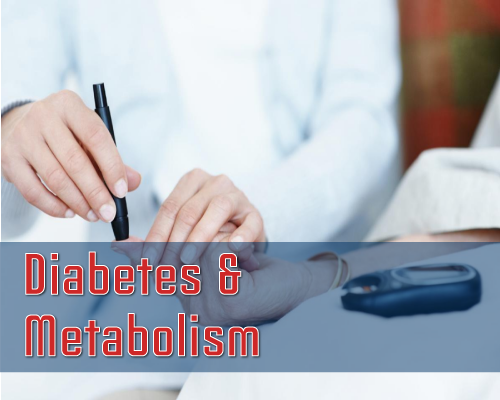Joanne DiFrancisco-Donoghue, Shaylyn Tuite, Sana Hassan, Joel Pineda, Alex Aksanov and Veronica Southard PT
Joanne DiFrancisco-Donoghue1,4*, Shaylyn Tuite2, SSana Hassan2, Joel Pineda3, Alex Aksanov3 and Veronica Southard PT3
1New York Institute of Technology (NYIT) College of Osteopathic Medicine Department of Osteopathic Medicine Old Westbury, NY
2NYIT College of Osteopathic Medicine, Old Westbury, NY
3NYIT Department of Physical Therapy, Old Westbury, New York
4Adele Smithers Parkinson′s Disease Treatment Center
*Address for Correspondence: Joanne DiFrancisco-Donoghue, NYIT, College of Osteopathic Medicine Department of Osteopathic Medicine Old Westbury, New York, Tel: +516-686-3759; Fax: +516-686-7890; ORCID: orcid.org/0000-0002-0848-3022; Email: [email protected]
Dates: Submitted: 21 March 2018; Approved: 30 May 2018; Published: 02 June 2018
Citation this article: DiFrancisco-Donoghue J, Tuite S, Hassan S, Pineda J, Aksanov A, et al. Are Wrist Worn Activity Trackers Accurate in Individuals with Parkinson′s Disease? Alzheimers Parkinsons Dis Open Access. 2018;4(1): 001-008.
Copyright: © 2018 DiFrancisco-Donoghue J, et al. This is an open access article distributed under the Creative Commons Attribution License, which permits unrestricted use, distribution, and reproduction in any medium, provided the original work is properly cited.
Keywords: Fitbit; Jawbone; Activity tracker; PD
Abstract
Introduction: Many activity trackers are worn on the wrists and calculate steps by arm swing and by stride length. This could be problematic in individuals with Parkinson′s Disease (PD) as they exhibit abnormal gait patterns, arm tremors, and smaller movements than a normal population.
Purpose: This study examined the reliability between two popular activity trackers in a PD population under laboratory conditions and in free living conditions.
Methods: Twenty-seven participants diagnosed with PD participated in this study conducted at the NYIT campus, Old Westbury, NY. The Fitbit Flex™ and the Jawbone UP3™ were compared under a controlled 6 Minute Walk Test (6MWT) and in free living conditions for 3 days/ 2 nights. During the 6MWT step count was recorded manually and a pedometer was attached to the hip. Each night the participants were asked to record how many hours they slept.
Results: Under the controlled 6MWT there were no significant differences found between the activity trackers and the manual counting, however there were differences when comparing the hip worn pedometer (p < 0.05). Under free living conditions there were no differences found between the two trackers step count and no differences were found between sleep and manual sleep records (p < 0.05).
Conclusion: Both the Jawbone UP3™ and Fitbit Flex™ devices proved to be comparably accurate in individuals with PD.
Introduction
Activity trackers are growing in popularity in the past 5 years showing that 21% of people who track their health doing so with an activity tracker [1,2]. Activity trackers have been named the hottest fitness trend by the American college of sports medicine for 2017 [3], and each year newer models arrive on the market. Although these trackers are designed to facilitate a healthier lifestyle rather than as medical outcome measures, demonstrating the accuracy of these devices can have considerable use for both researchers, clinicians, and for individuals to self - monitor their activity and sleep patterns.
Activity trackers can be useful to measure some motor symptoms in Parkinson′s Disease (PD). The primary motor symptoms associated with PD are resting tremors, slow movement [bradykinesia], rigidity, and postural instability [4]. Other motor symptoms of PD include freezing of gait, shuffling gait, and certain non-motor symptom such as pain, cognitive abnormality and sleep disorders [4]. The primary sleep related disorders found in PD are Rapid Eye Movement (REM) sleep disorders and fragmentation of sleep [5]. The most common gait related changes are decreased gait velocity, decreased stride length and increased double support (time with both legs on the floor) [6].
The Fitbit Flex™ and the Jawbone UP3™ are both accelerometer devices that assess steps taken, sleep duration and sleep quality. These trackers are utilized to help make individuals aware of how many steps they attain during a day. These trackers have been shown to be effective in counting steps for healthy individuals across testing environments including flat ground walking, stairs and treadmill walking [1]. However, these trackers have shown inaccuracy in healthy participants with slower gait velocities and thus need to be tested in individuals with PD who commonly have slower gait velocities [2].
Step counting in these devices has not been tested for accuracy in a population with PD [7]. While the Fitbit Flex™ and Jawbone UP3™ are well documented to be accurate in measuring the activity and sleep of healthy participants, there is no evidence suggesting they will be accurate in measuring individuals with PD given that 90% of individuals with PD suffer with a sleep disorder [6].
The present study examined the accuracy of two popular activity trackers in participants with PD under a controlled laboratory setting, and in free living conditions.
Methods
Twenty - seven participants (22 men, 5 women) aged (67.3 ± 8.4) were recruited from the Adele Smithers Parkinson′s Disease Treatment Center of the New York Institute of Technology (NYIT), Old Westbury, NY. This study was approved by the New York Institute of Technology Institutional Review Board. All participants read and signed consent before participation.
Inclusion criteria included:
• A diagnosis of PD using the Brain Bank criteria scale
• Ability to ambulate independently
• Ability to ambulate independently for 6 minutes.
Exclusion criteria:
• Any other neurological diagnosis.
• Any orthopedic injury that will affect gait or arm swing
• Any previously diagnosed sleep condition non-related to PD. This study was NYIT Institutional Review Board approved and all participants signed a written consent (Table 1).
Table 1
| Table 1: Subject characteristics. | |
| PD subjects analysed (n = 27) |
|
| Male sex, No. | 22 |
| Age, mean y, ± SD | 67.3 ± 8.4 |
| Years diagnosed mean y, ± SD | 4.9 ± 3.7 |
| UPDRS motor score ± SD | 32.7 ± 12.2 |
| Hoehn and Yahr ± SD | 2.1 ± 2.0 |
| Step length (m) ± SD | 0.7 ± 0.56 |
| Gait speed (m/s) ± SD | 1.26 ± 0.34 |
| Anti-Parkinson′s medication No. (%) | |
| Levodopa therapy | 16 (59) |
| Dopamine agonists | |
| Ex: Ropinirole, Pramipexole, Amantadine | 4 (15) |
| Other anti-parkinsonian agents | |
| Ex: Tolcapone, Rasagiline, Ensam | 7 (26) |
Procedures and Measurements
The Movement Disorder Society United Parkinson′s Disease Rating Scale motor test (MDS-UPDRS III)
This test examines motor symptoms with 33 items scored on a scale of 0 - 4 (4 indicates the highest level of symptom severity). This is a sub-section of the Unified Disease Parkinson′s Rating Scale, which is commonly used to quantify symptoms of PD in both clinical practice and research [8]. This test was conducted by a MDS-UPDRS licensed professional and conducted when subjects were at peak medication.
Gait speed test
The participant walked without physical assistance 7 meters. To account for acceleration and deceleration, timing started when the participant′s leading foot crosses the 2-meter mark and ended when their leading foot crossed the 5 - meter mark.
• The participant was instructed: ″When I say go walk at your normal comfortable speed until I say stop.″
Data was collected from three trials and calculated to attain average gait speed. The participants wore both activity trackers on the non - affected PD wrist. If both sides were affected, the least affected side was chosen. The two trackers used in this study were the Fitbit Flex™® (Fitbit® San Francisco, CA) and the Jawbone UP3® (Jawbone® San Francisco, CA). These devices were synced with smartphones from the institution and participants were unable to see their step count. Each participant performed the 6 minute walk test in the lab. Four methods were used to collect step data for the 6 minute walk test. Both activity trackers were used, manual step count was recorded using a manual tally counter app, and a New Lifestyles Digi-Walker SW-651® pedometer was used (NEW-LIFESTYLES INC. ®http://www.thepedometercompany.com/pedometers.html) [9]. The pedometer is clipped onto the participant′s pants, midway between the umbilicus and iliac crest. As a precaution, to maintain verticality, the pedometer was taped in place. When the 6 minute walk test was complete, the participants wore the trackers home for 3 days and 2 nights. Participants were instructed not to take off the trackers for those three days except for when they showered.
Outcomes
Step count assessment -6 minute walk test: The 6 Minute Walk test is a sub maximal measure of aerobic capacity. Relative contraindications of the test are resting heart rate > 120, systolic blood pressure > 180 mm Hg, and diastolic blood pressure > 100 mmHg. Vital signs were monitored before and after the test. The distance they walked was recorded. During the Six minute walk a researcher counted and manually recorded every step taken. The participants were wearing both activity monitors and after the 6 minute test the investigators recorded step counts from both wrist worn activity trackers. Administration was performed according to the American Thoracic Society Recommendations [10]. The pedometer was placed midway between the iliac crest and the umbilicus according to manufacturer instructions and the manually recorded step count was recorded by an investigator using a tally counter.
Step count free living conditions: The participants wore both devices home on the same wrist for 3 days and 2 nights. Participants were told to take the devices off when showering. Daily step count and sleep duration were recorded.
Sleep assessment: The participants were given both activity trackers to wear home and wear to sleep for at least 2 nights. Each participant was asked to record the time they went to bed and the time they woke up in the morning.
Results
A repeated measures design was used to compare the Fitbit Flex™®, Jawbone UP3®, pedometer step count, and the manual step count. A One Way ANOVA with Repeated Measures with alpha set at 0.05 was used to determine significance in step count during the 6 Minute Walk Test. Significant differences were found between the pedometer and all three other methods of step counting. Fitbit Flex™ (P = 0.012), Jawbone UP3 (P = 0.005), and manual count (P = 0.03). The manual count, which was used as a true step count in this study, while approaching significant difference (P = 0.059 for Fitbit Flex™, P = 0.051 for Jawbone UP3) was not found to be significantly different from either of the wrist worn activity trackers. The Fitbit Flex™ had a mean overestimation of 27 steps compared to the manual count, and the Jawbone UP3 had a mean overestimation of 21 steps compared to the manual count. The pedometer had a mean underestimation of 143 steps compared to the manual step count, 121 steps for the Jawbone UP3 and 116 steps for the Fitbit Flex™.
The mean step count of each device was compared to the mean manual step count. The Fitbit Flex™ was found to have a percentage accuracy of 95.8%, the Jawbone UP3 of 96.6%, and the hip worn pedometer of 77.6%.
There were no significant differences in sleep time recorded between the Fitbit Flex™, Jawbone UP3, and the manually kept journal (Table 2). There were no significant differences between groups or within group differences for the Fitbit Flex™ or Jawbone UP3. Both the activity trackers recorded less total sleep than the manual journal each participant kept for the sleep duration of the study. The Fitbit Flex™ tracked a mean 0.592 hours less than the recorded value and the Jawbone UP3 tracked 0.528 hours less than the recorded value. The mean sleep times counted by the Fitbit Flex™, Jawbone UP3 and manual journal respectively were 6.84 ± 2.2, 6.89 ± 1.7 and 7.42 ± 1.35 hours.
Table 2
| Table 2: Comparison of step and sleep accuracy. | |||||
| Jawbone Up3 |
Fitbit flex | Manual record | Pedometer | P value | |
| 6 minute walk (steps) ± SD | 618.6 ± 85.3 | 614.4 ± 83.4 | 640.6 ± 54.1 | 497.5 ± 235.3 | *0.02 |
| Free living (steps) ± SD | 6089.8 ± 3691 | 6198.5 ± 4141 | 0.684 | ||
| Sleep (hrs) ± SD | 7.0 ± 1.6 | 6.8 ± 2.2 | 7.4 ± 1.4 | 7.4 ± 1.4 | 0.139 |
| *Significance. | |||||
The present study serves as support for the use of the Fitbit Flex™ and the Jawbone UP3 as accurate step recorders for individuals with PD. These trackers measure the acceleration, frequency, duration, intensity and patterns of movement to calculate steps. The participants in this study demonstrated an average step length of 0.7m ± 0.56 which is within normal range for this age. A gait speed of 1.26 ± 0.34 falls on the lower end of the norm for this age group (1.26 m/s-1.94 m/s) [11]. This slight decrease in gait speed did not seem to affect the accuracy of the Fitbit Flex™ and Jawbone UP3 as they fall close to the 96.4-99.6% accuracy found in a healthy population by Kaewkannate et al in 2016 under an indoor controlled environment [1]. For sleep studies, while polysomnography is still the gold standard in overall accuracy and breadth of information collected, these devices appear to be effective in at collecting total sleep time as compared to the manual journals.
The current use of technology to track activity through step count and to monitor sleep patterns is transforming physiology research. It has allowed researchers and clinicians to not only ask new questions about activity and sleep, but also to enable us to answer more questions in healthy and diseased populations. Dwyer and colleagues demonstrated that participants who attained or exceeded 10,000 steps per day had a 46% lower chance of death over the next 10 years [12,13]. The requirement of 10,000 steps per day is based on the current recommendations by the Surgeon General and is equivalent to approximately 30 minutes of walking per day. It is well known that most chronic neurological conditions, including PD, result in decreased physical activity [14]. The National Parkinson Foundation has emphasized the importance of exercise as part of the standardized care for PD to reduce disability and slow the progression of the disease; Yet, in recent studies, the step count shown in individuals with PD is significantly less than the recommended norm and 56% of people with PD reported that they do not exercise and have a poor quality of life [14,15]. According to Ellis and colleagues, limited activity in PD was most commonly due to low expectations of outcomes, lack of time, and fear of falling [16]. Motivating this population is challenging. A key reason for utilizing activity trackers in a PD population in a clinic setting is for health professionals to motivate patients and help to increase their mobility and decrease mortality.
There were limitations to the current study. The study sample size was small and had few women participants. Other limitations include lack of a non-PD control group to compare to. Although we accounted for placing the trackers on the non-affected PD wrist, we did not measure the decreased arm swing or severity of tremors. Future studies should examine the effects severe tremors or dyskinesia have on wrist worn activity trackers using a valid scale. Another limitation is how to account for an accurate step count in free living conditions. Individuals with PD may feel more comfortable and be more aware of their gait while walking under a controlled environment for 6 minutes.
Conclusion
In conclusion, this study demonstrated that the Fitbit Flex™ and the Jawbone UP3 were both comparable and accurate to measure step count and sleep in a population with PD.
All co-authors have read this journals ethical publication guidelines. All co-authors have been substantially involved in the study and the preparation of this manuscript; no undisclosed groups or persons have had a primary role in the study and/or in manuscript preparation, there has been no ghost writing. All co-authors have seen and approved the submitted version of the paper, accept responsibility for its content, and agree to the order of author names.
Acknowledgment
The authors would like to thank the Adele Smithers Parkinson′s Disease Treatment Center for their support.
References
- Kaewkannate K, Kim S. A comparison of wearable fitness devices. BMC Public Health. 2016; 16: 433. https://goo.gl/zzxK3m
- Evenson KR, Goto MM, Furberg RD. Systematic review of the validity and reliability of consumer-wearable activity trackers. Int J Behav Nutr Phys Act. 2015; 12: 159. https://goo.gl/gQw1QR
- Thompson WR. Worldwide survey of fitness trends for 2017. ACSM's Health & Fitness Journal. 2016; 20: 8-17. https://goo.gl/euJb5q
- Jankovic J, Aguilar LG. Current approaches to the treatment of Parkinson's disease. Neuropsychiatr Dis Treat. 2008; 4: 743-757. https://goo.gl/BtVygK
- Ferreira T, Prabhakar S, Kharbanda PS. Sleep disturbances in drug naive Parkinson's Disease [PD] patients and effect of levodopa on sleep. Ann Indian Acad Neurol. 2014; 17: 416-419. https://goo.gl/5tk8hb
- Hausdorff JM. Gait dynamics in Parkinson's disease: common and distinct behavior among stride length, gait variability, and fractal-like scaling. Chaos. 2009; 19: 026113. https://goo.gl/YRECbd
- Paul SS, Tiedemann A, Hassett LM, Ramsay E, Kirkham C, Chagpar S, et al. Validity of the fitbit activity tracker for measuring steps in community-dwelling older adults. BMJ Open Sport Exerc Med. 2015; 1: e000013. https://goo.gl/qq61Er
- Goetz CG. Movement Disorder Society-Unified Parkinson's Disease Rating Scale [MDS-UPDRS]: a new scale for the evaluation of Parkinson's disease. Rev Neurol (Paris). 2010; 166: 1-4. https://goo.gl/HXMCNk
- Schneider PL, Crouter S, Bassett DR. Pedometer measures of free-living physical activity: comparison of 13 models. Med Sci Sports Exerc. 2004; 36: 331-335. https://goo.gl/PPDtwg
- Enright PL, McBurnie MA, Bittner V, Tracy RP, McNamara R, Arnold A, et al. The 6-min walk test: a quick measure of functional status in elderly adults. Chest. 2003; 123: 387-398. https://goo.gl/6WS4Xg
- Fritz S, Lusardi M. White paper: "walking speed: the sixth vital sign". J Geriatr Phys Ther. 2009; 32: 46-49. https://goo.gl/bMfqj1
- Dwyer T, Pezic A, Sun C, Cochrane J, Venn A, Srikanth V, et al. Objectively measured daily steps and subsequent long term all-cause mortality: the tasped prospective cohort study. PLoS One. 2015; 10: e0141274. https://goo.gl/D4oUUM
- Step it up! The surgeon general's call to action to promote ealking and walkable communities. 2017; https://goo.gl/49aghS
- Christiansen C, Moore C, Schenkman M, Kluger B, Kohrt W, Delitto A, et al. Factors associated with ambulatory activity in de novo Parkinson disease. J Neurol Phys Ther. 2017; 41: 93-100. https://goo.gl/gRxPp5
- Oguh O, Eisenstein A, Kwasny M, Simuni T. Back to the basics: regular exercise matters in Parkinson′s disease: results from the National Parkinson Foundation QII registry study. Parkinsonism Relat Disord. 2014; 20: 1221-1225. https://goo.gl/LShj5M
- Ellis T, Boudreau JK, DeAngelis TR, Brown LE, Cavanaugh JT, Earhart GM, et al. Barriers to exercise in people with Parkinson disease. Phys Ther. 2013; 93: 628-636. https://goo.gl/5LyvsL
Authors submit all Proposals and manuscripts via Electronic Form!




























